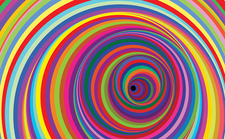This is your command line on lsd
Command Line – lsd

© Lead Image © bluedarkat, 123RF.com
A revamp of ls, lsd offers color coding plus revised options relevant to the modern computer.
If you work at the command line, you probably use ls [1] frequently to list directories and their contents. However, it is one of the oldest commands, and many of its options are no longer relevant to modern computer use. In fact, most people can get by with only a small sub-set of its available options. One of several new revamps, lsd (LSDeluxe) [2] (Figure 1) attempts to modernize and simplify ls by assuming a default color code and – apparently – by reducing the number of options and adding options of its own. However, since this is 0.2.21 release, it is hard to be sure exactly what the general release will look like.
The lsd release page includes Linux packages for Debian and Gentoo. An alternative is to build from source with the Rust Cargo package manager or install a Snap package. Should you install from source, you will also need to install Nerd Fonts [3] in order to use fancy icons to identify file types.
On installation – or perhaps later, after you have tried lsd and have a better sense of what it can do – you may also want to add a configuration file (Figure 2), copying and modifying the sample provided on the project page. This configuration file should be placed in ~/.config/lsd/config.yaml. Table 1 lists the main fields available and their settings. Default configurations can be overridden from the command line but can reduce the length of entered commands.
[...]
Buy this article as PDF
(incl. VAT)
